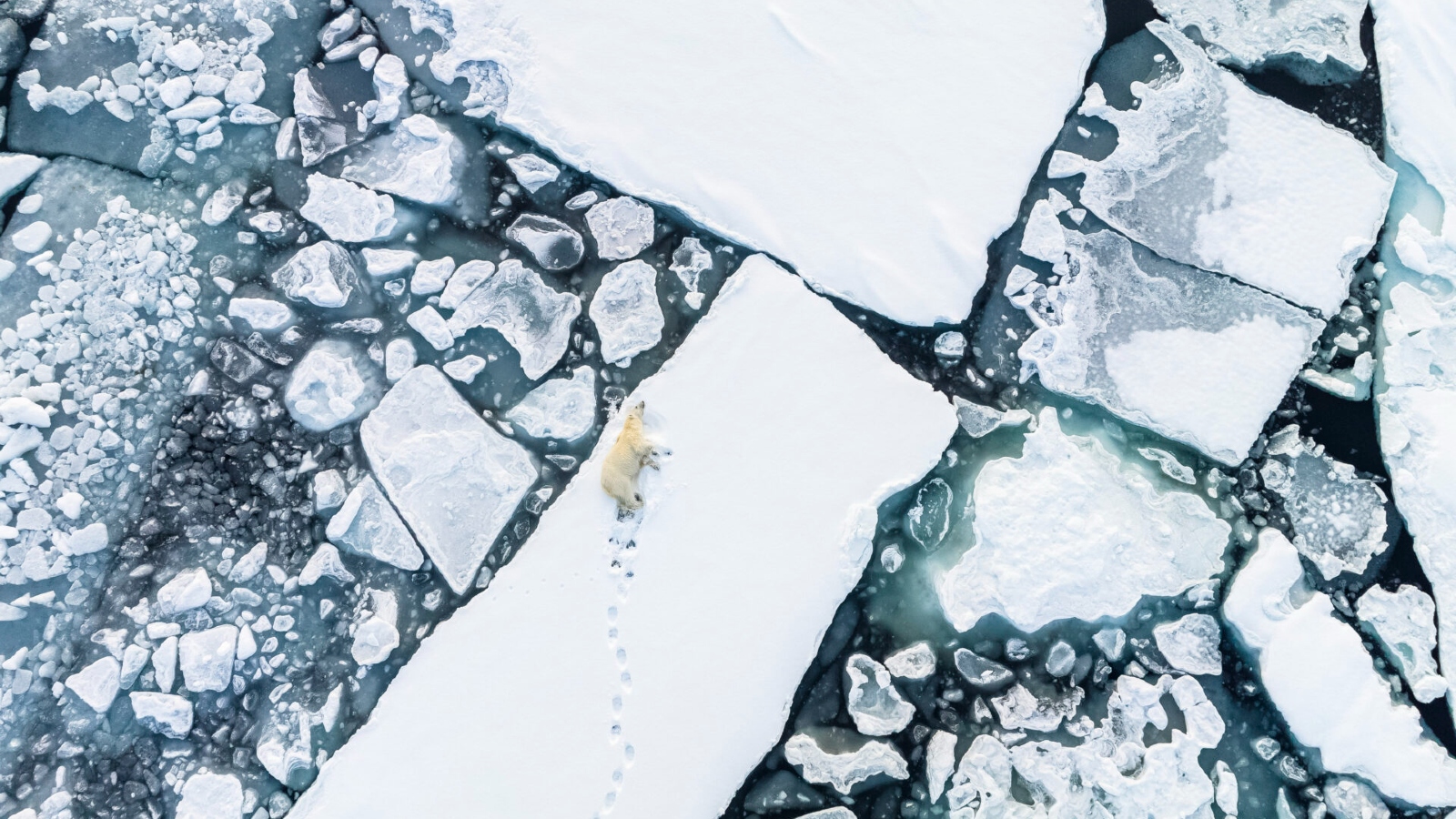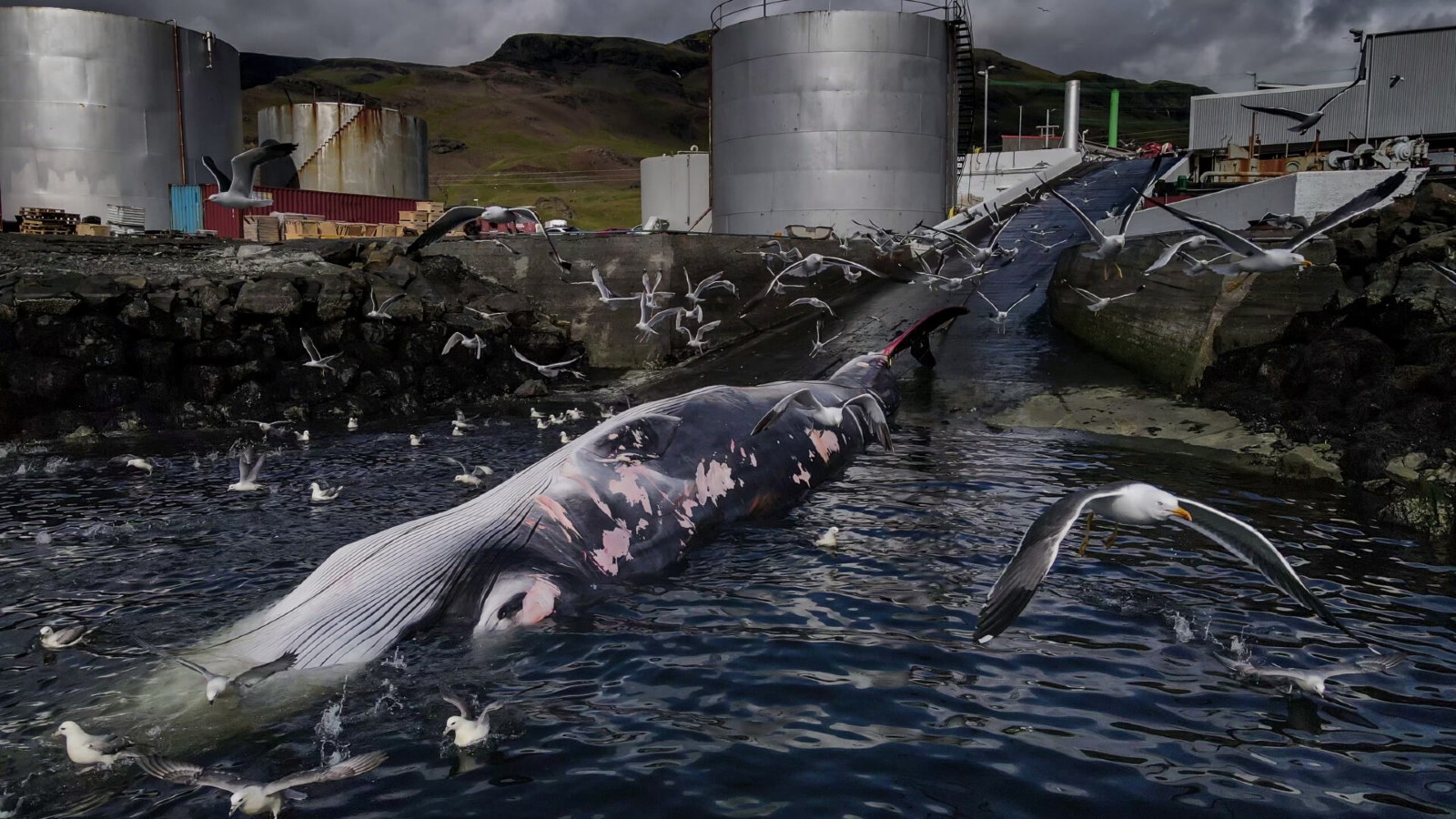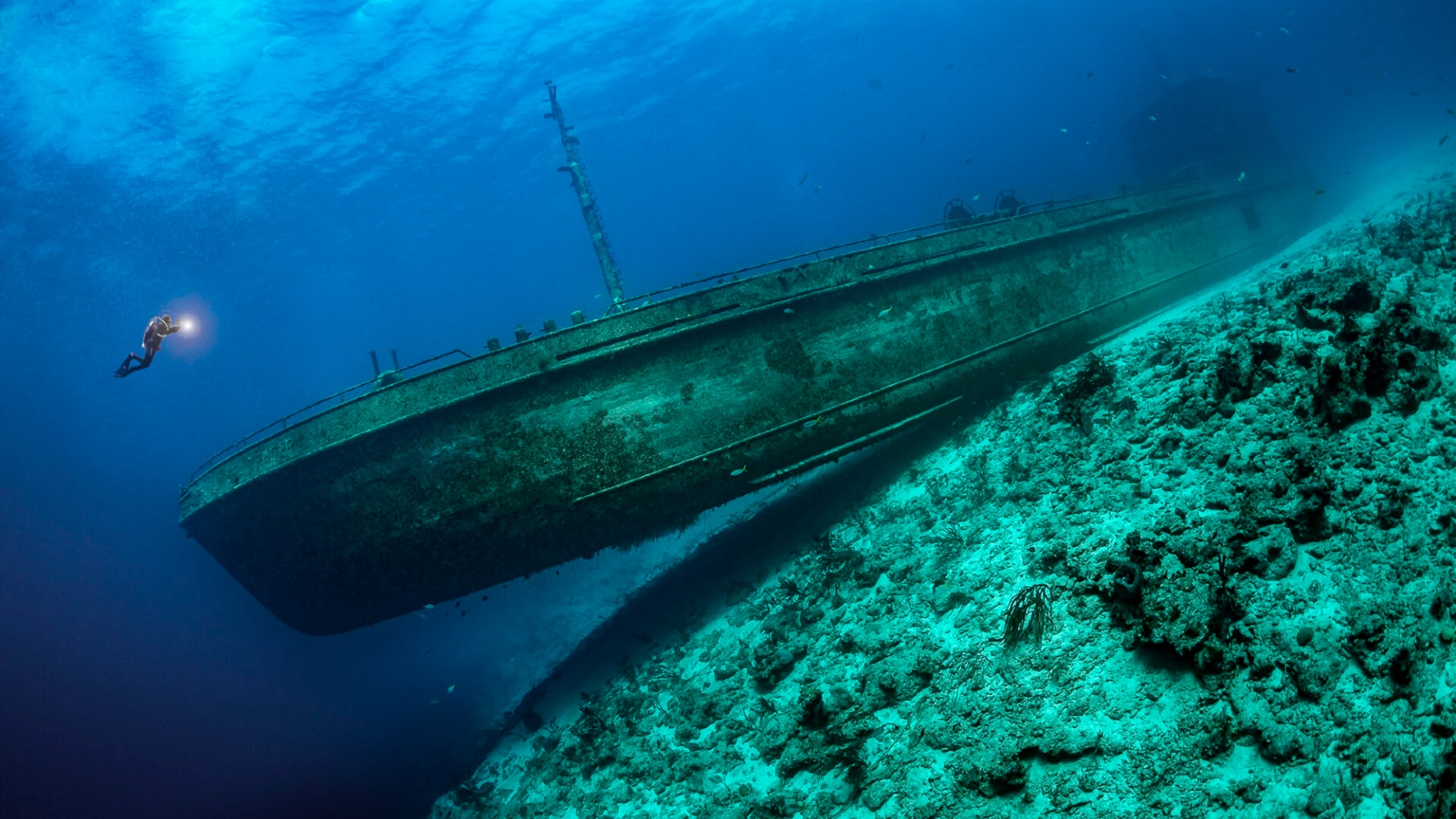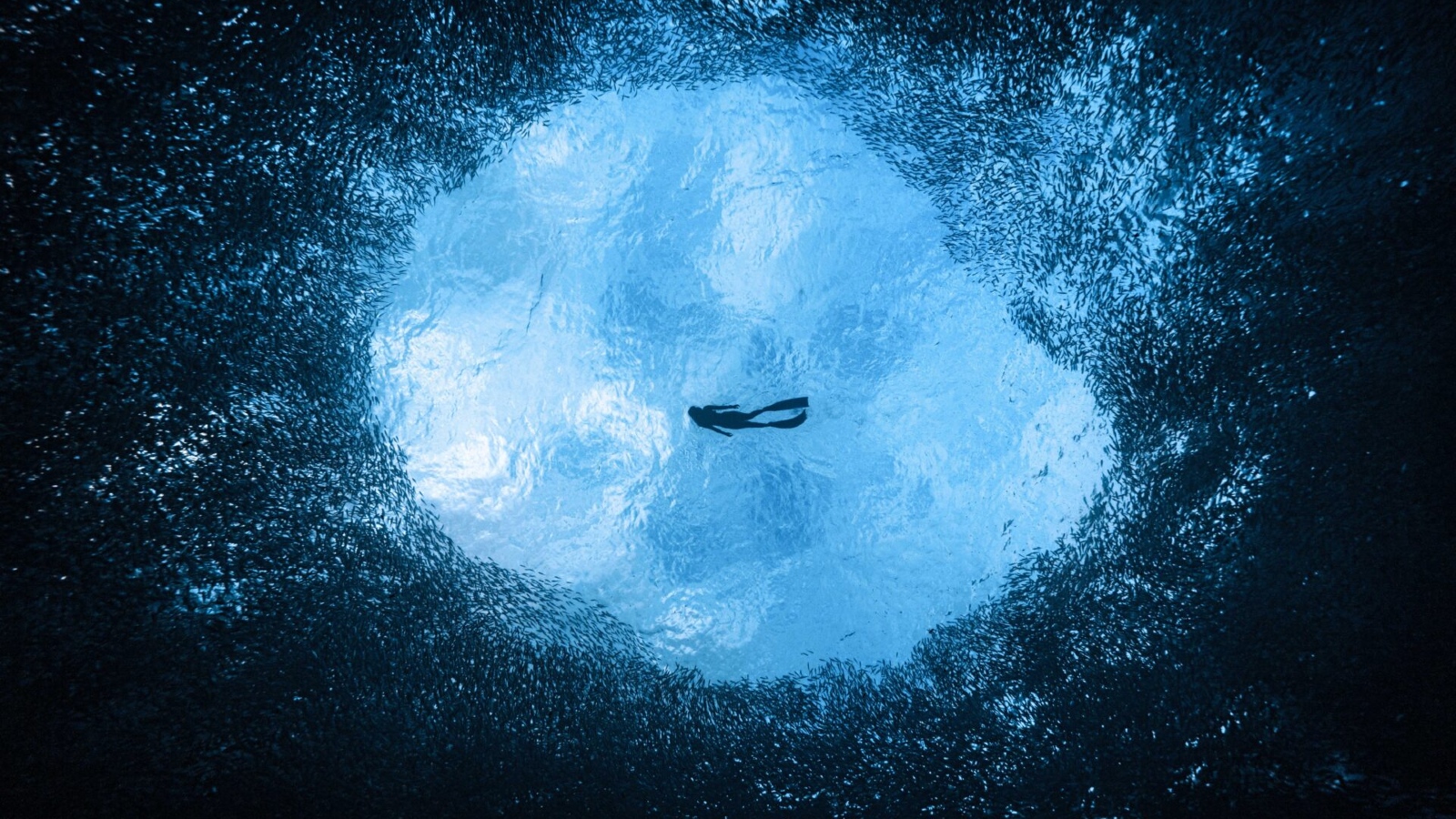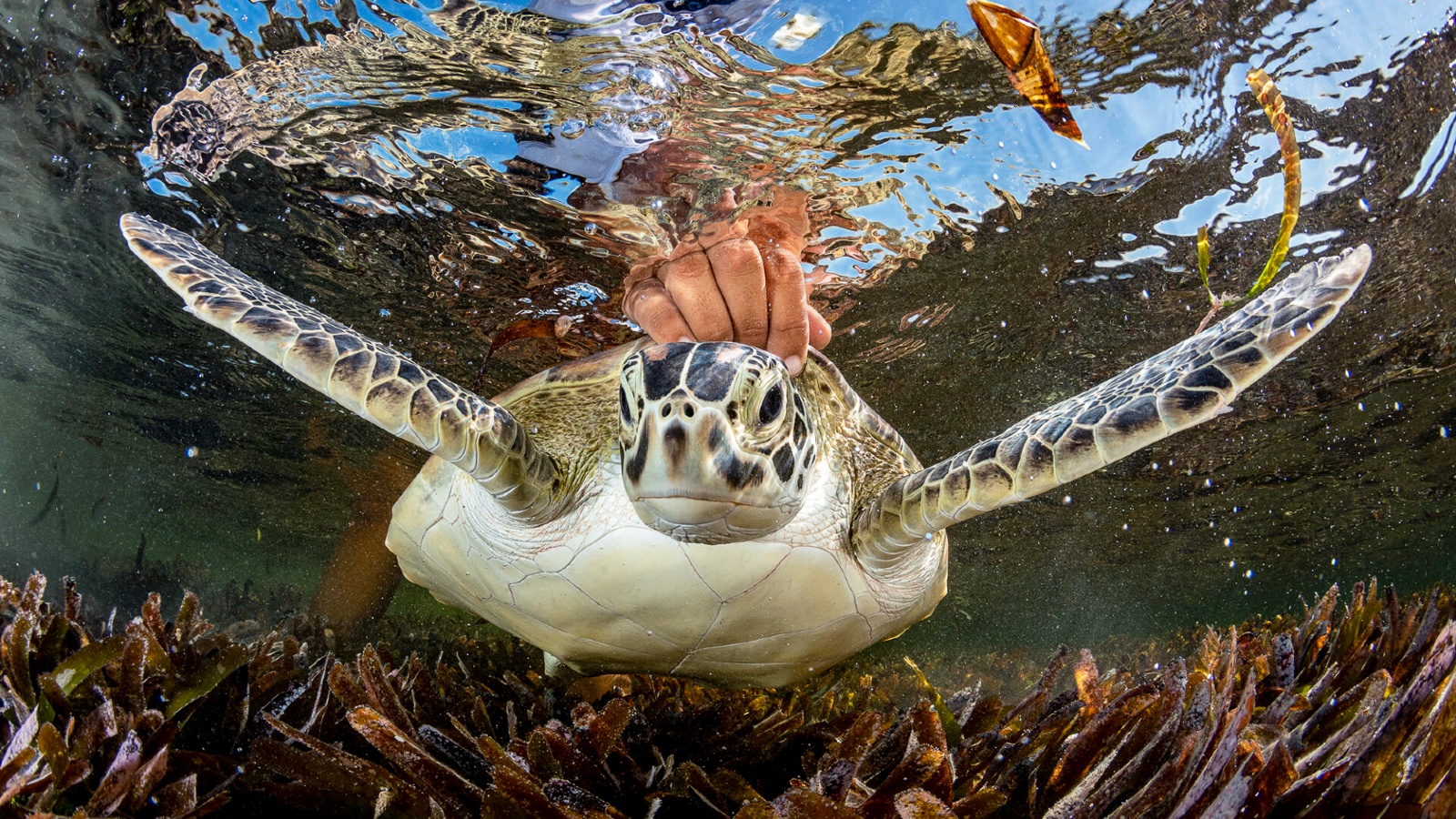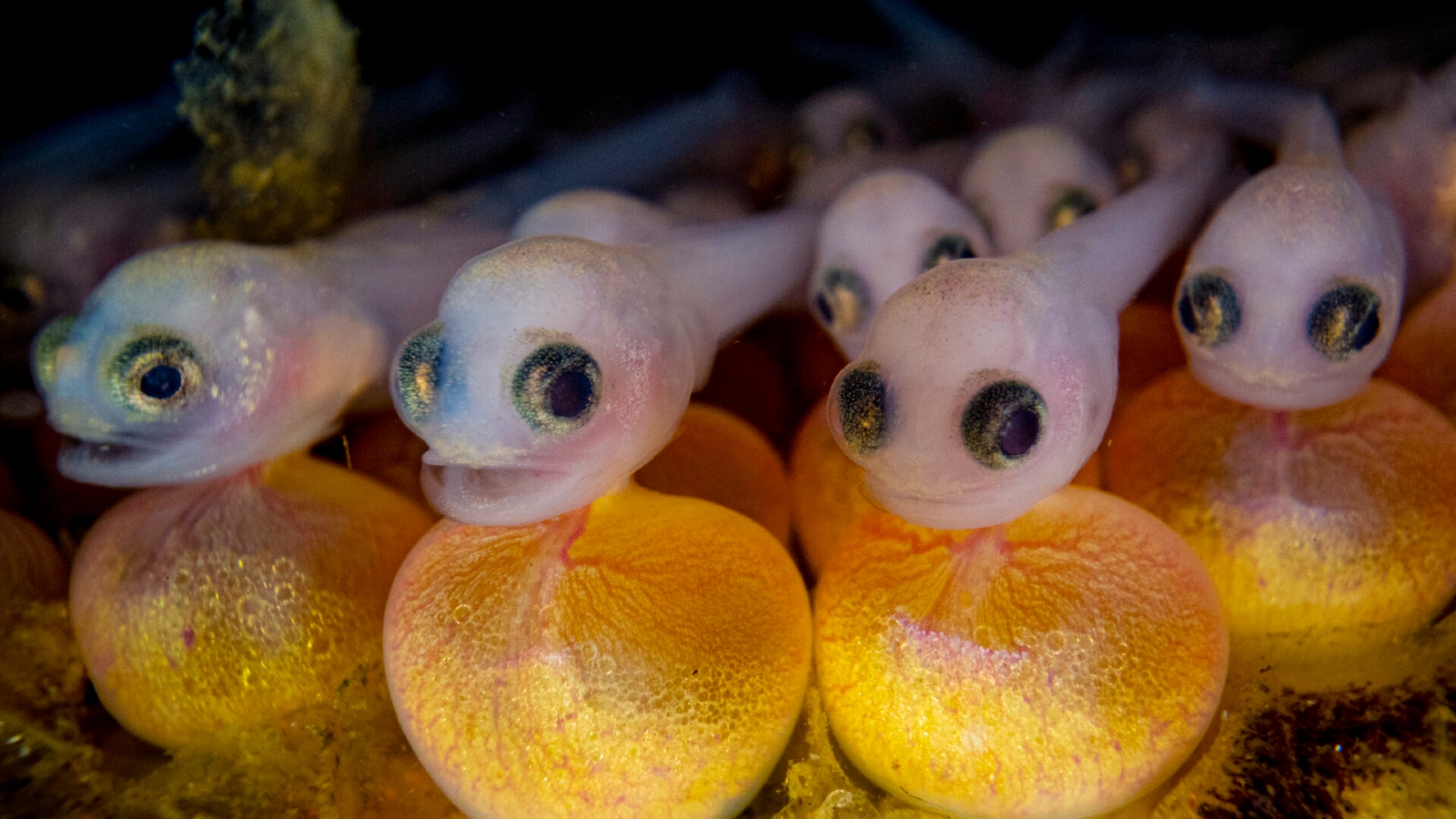
A hungry whale mid-gulp, a lazy seagull riding a sea turtle, an adorable-yet-deadly mini octopus and a group of alien-looking fish babies fused to eggs were some of the stars of a recent ocean photography competition.
The stunning images were among those short-listed at the 2024 Ocean Photographer of the Year awards. The winners of the competition, which is run by Oceanographic Magazine and sponsored by the Swiss watch company Blancpain, were announced Thursday (Sept. 12) at an event in London's Somerset House.
In total, more than 80 photos were short-listed across 10 categories, and you can see the best ones below.
Related: Under the sea: 50 breathtaking images from our oceans
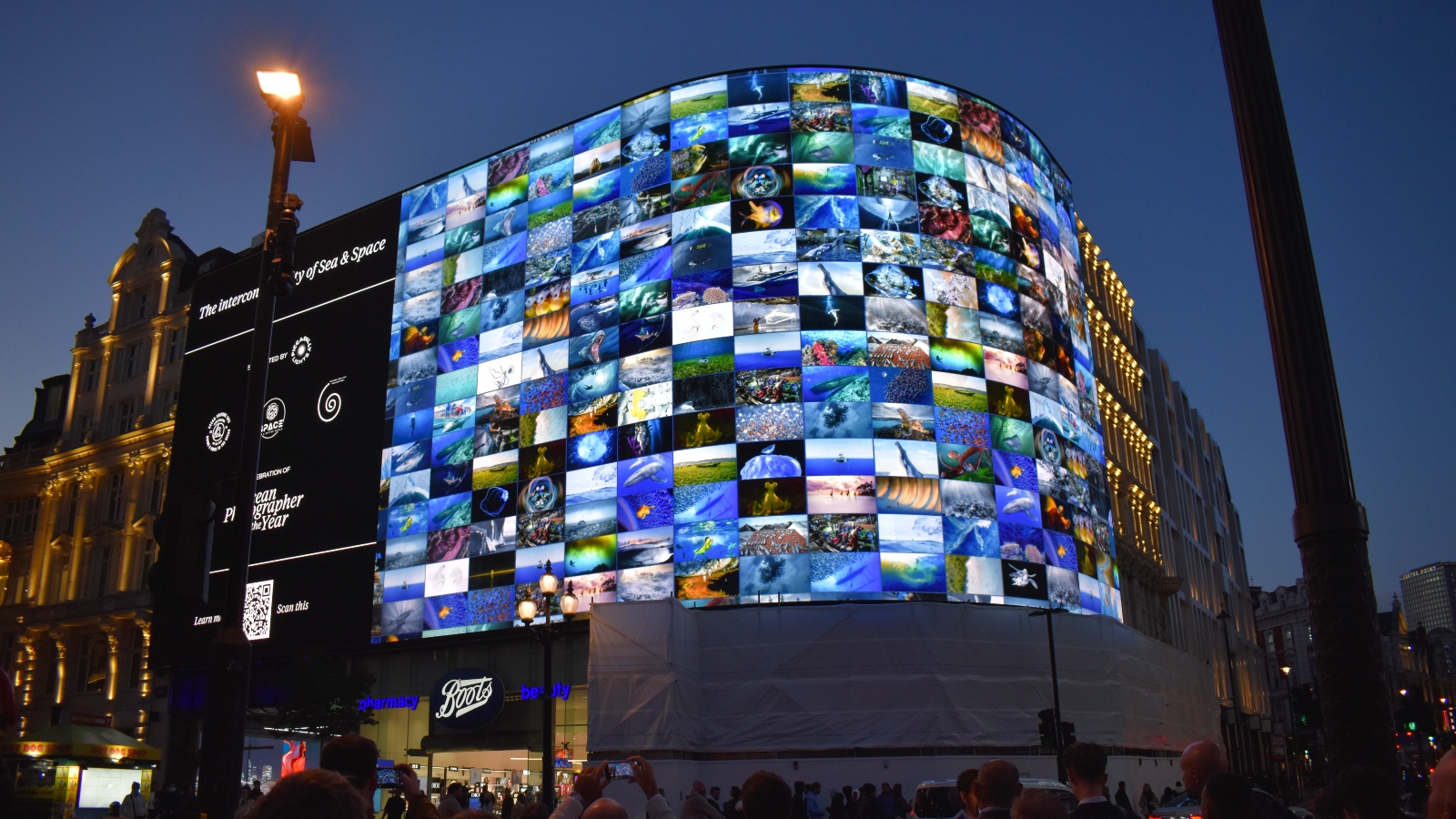
The standout image was a high-definition shot of a Bryde's whale (Balaenoptera edeni) about to gulp down a massive "bait ball" of fish. Photographer Rafael Fernández Caballero captured the stunning shot in Baja California, Mexico, and took home first place in the Ocean Photographer of the Year category.
"A feeding frenzy is the biggest show on earth for me," Fernández Caballero said in a statement. "The highlight was this whale coming out of nowhere with its mouth wide open." But there was a wide range of other species involved in the banquet, which was likely caused by the recent El Niño event, they added.
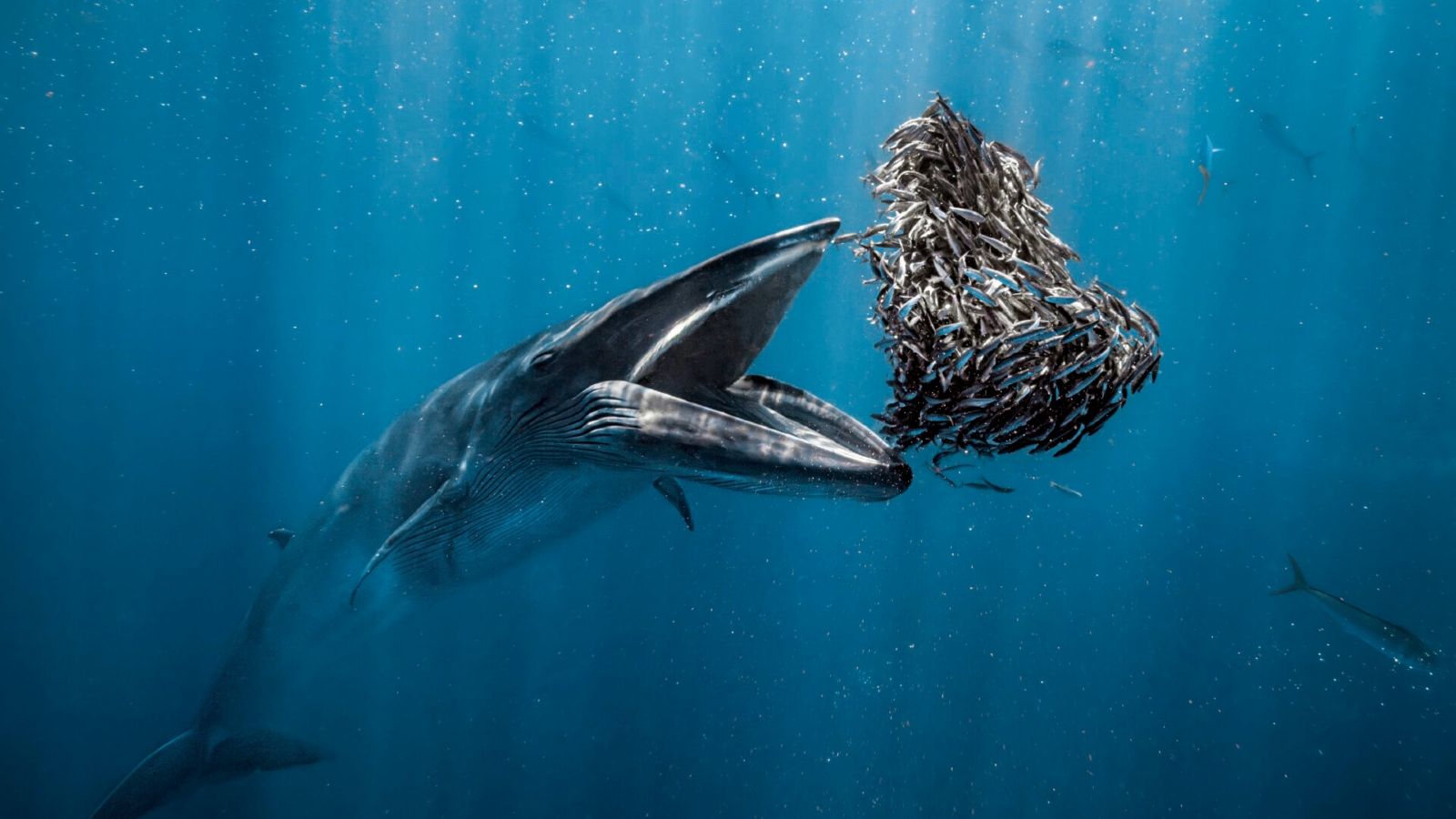
One of the standout images short-listed in the Fine Art category was a shot from Enric Gener showing a lone seagull casually sitting on a turtle's shell floating in the middle of the Mediterranean Sea.
After five hours of scanning the empty ocean for something to photograph, Gener spotted a seagull with its legs out of the water and was shocked when he realized it was standing on a sea turtle.
"I decided to jump into the water, thinking I would find the turtle dead because it wasn't moving," Gener said in a statement. "When I got close enough, I saw its face underwater and realised that the sea turtle was alive."
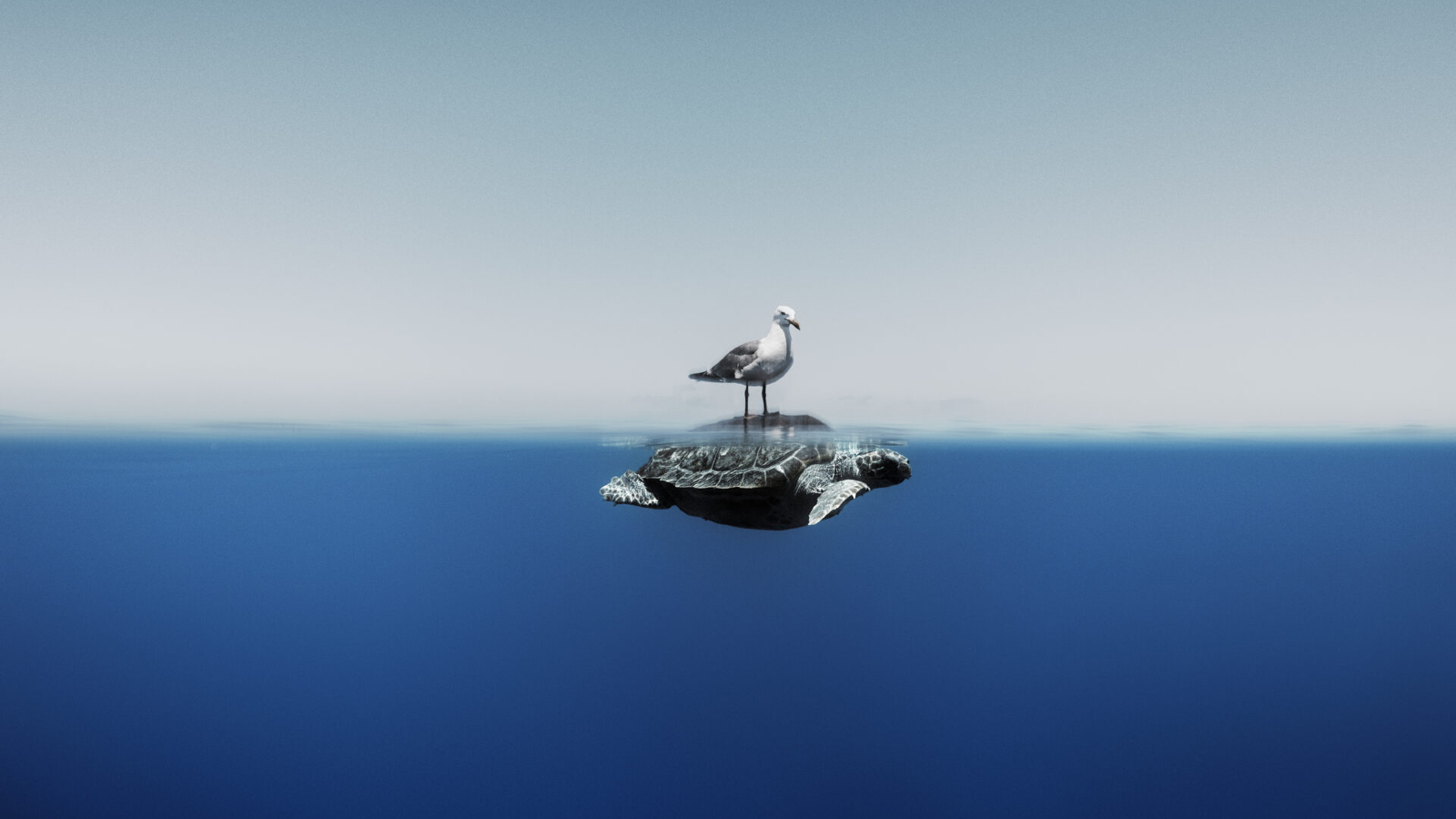
The runner-up in the Ocean Portfolio category was Katherine Lu, who captured a peculiar deep-sea scene in the Philippines. It shows a juvenile poison ocellate octopus (Amphioctopus mototi) planted on a pyrosome, a free-floating colonial creature made up of single-cell tunicates embedded in a gelatinous "tunic."
"Each night during the vertical migration, deep-sea creatures like this octopus migrate upwards to the lighter, shallower waters to feed and avoid predators before descending back into the depths by morning," Lu said in a statement. But hitching a ride on the pyrosome makes this daily migration much easier, she added.
The tiny octopus, which was around 0.8 inch (2 centimeters) tall, contains the same toxin as blue-ringed octopuses (Hapalochlaena), which are among the deadliest animals on Earth.
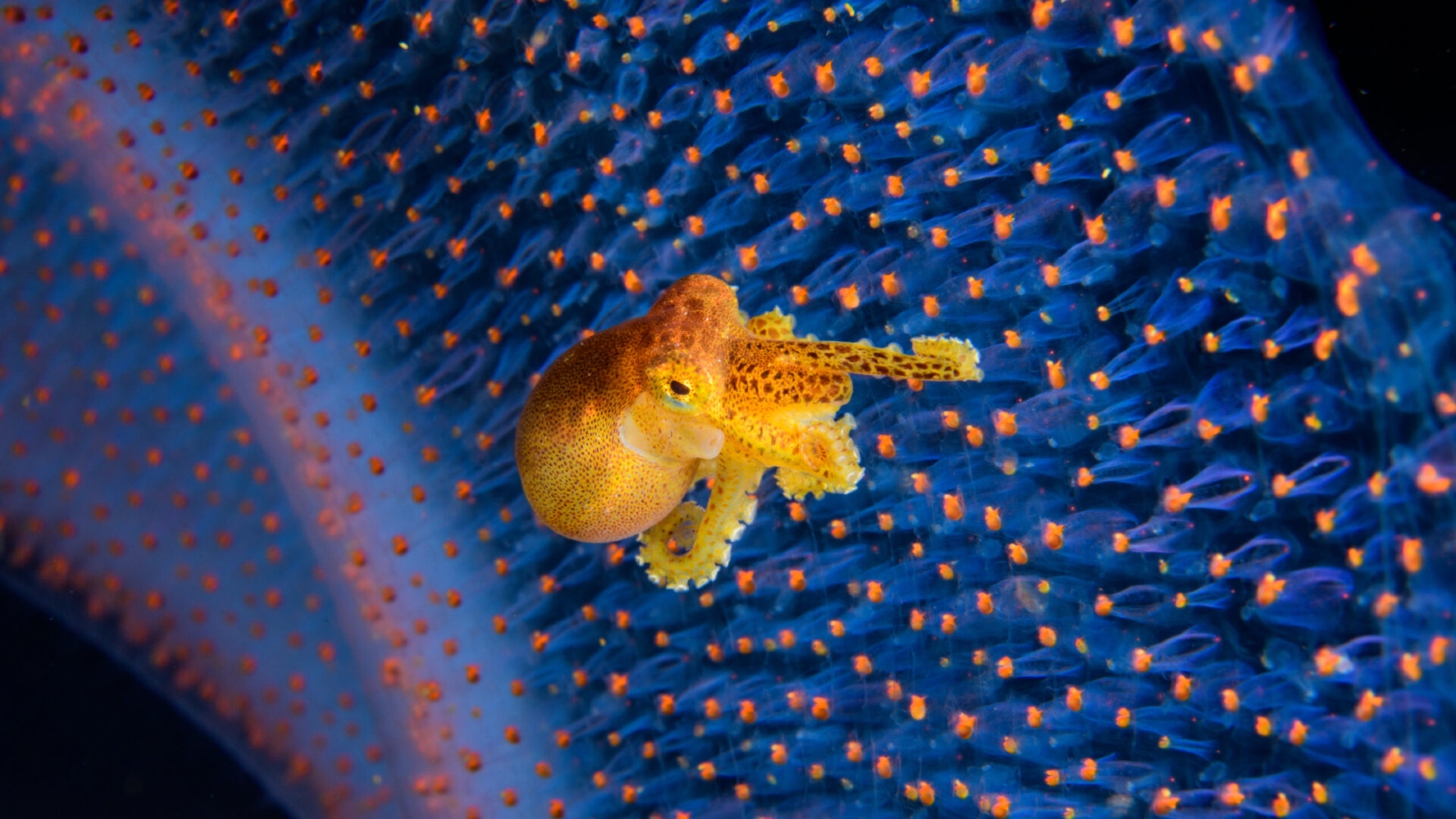
First place in the Ocean Portfolio category went to Shane Gross, who photographed a bizarre litter of baby plainfin midshipman fish (Porichthys notatus) off the coast of British Columbia, Canada. The wide-eyed juveniles sat atop glowing orange yolk sacs, which they were still attached to at the time.
The vulnerable younglings remain tied to their eggs and "are guarded over by their father until they are big enough to swim out from under the rock they are living on," Gross explained in a statement. Once they leave their den, the fish will swim off into the deep sea and won't return to the shallows until it is their turn to breed, Gross added.
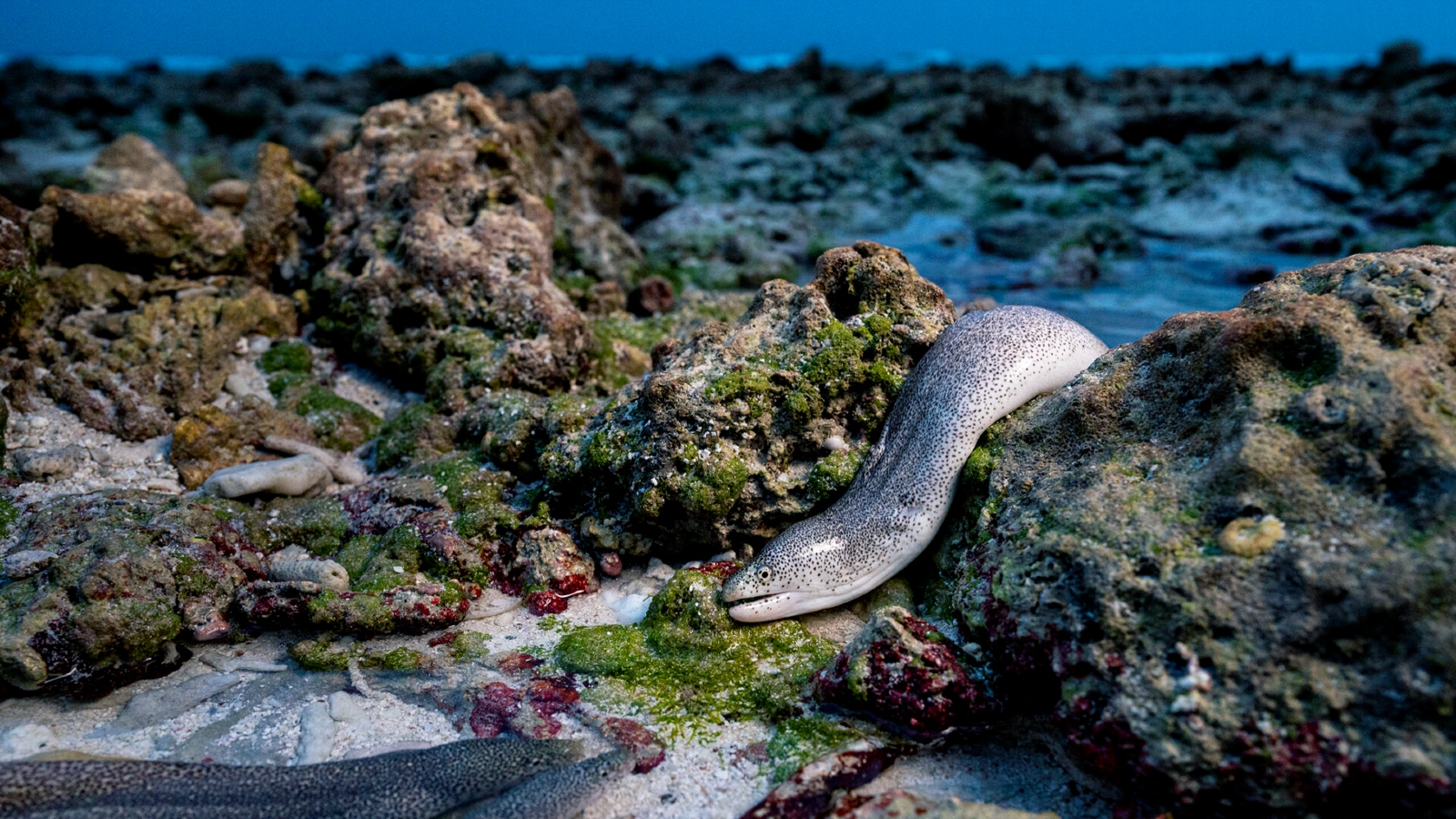
In the Wildlife Photographer of the Year category, Gross was also short-listed for an eye-catching image of a peppered moray eel (Gymnothorax pictus) lying slumped over rocks between two intertidal pools on D'Arros Island in the Seychelles.
A pair of smaller eels can also be seen slithering out of water in the foreground. "Their ability to come completely out of the water is amazing and surprising," Gross said.
You can check out more of the amazing images below.
